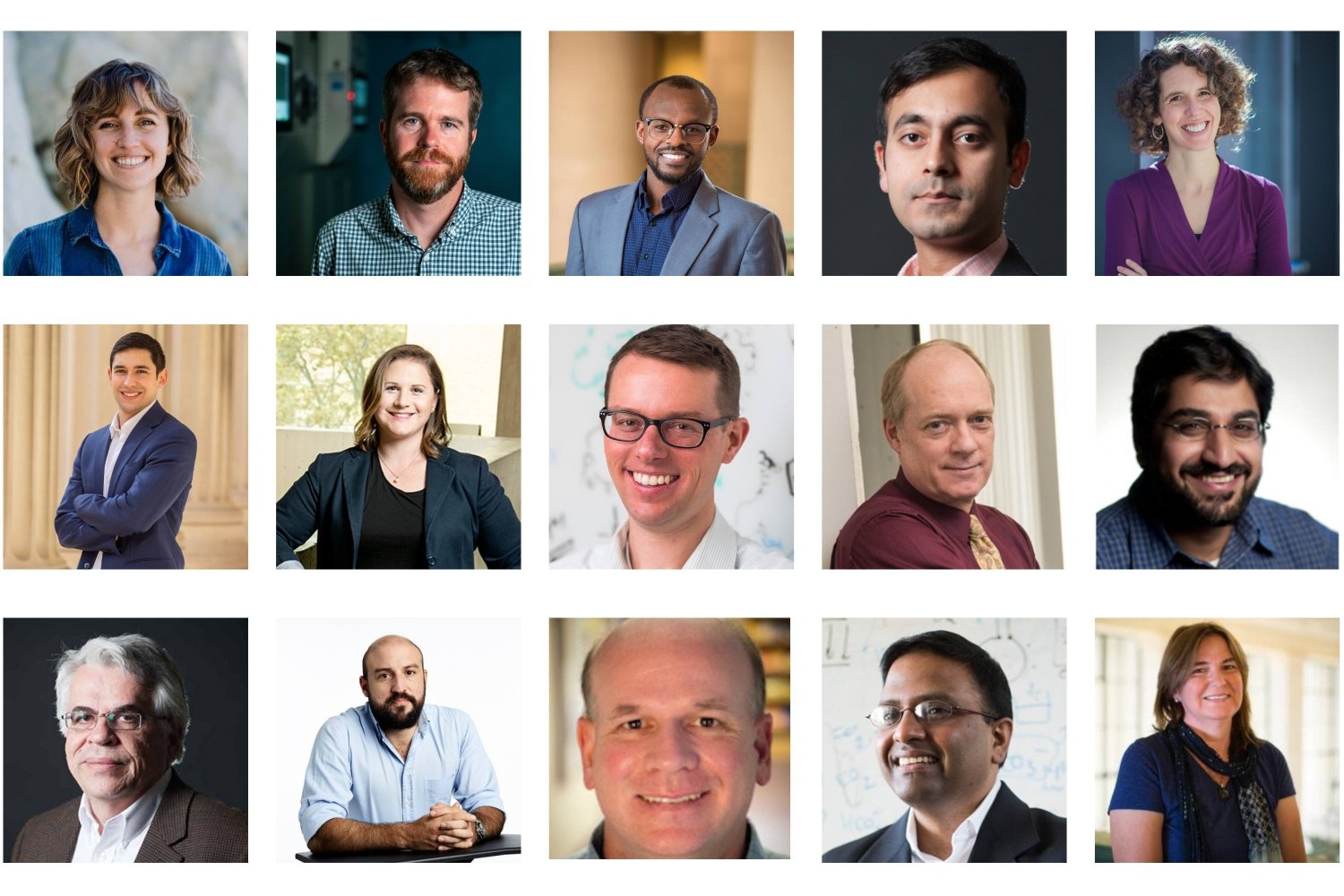
MIT-led teams win National Science Foundation grants to research sustainable materials
The teams will work toward sustainable microchips and topological materials as well as socioresilient materials design.
March 21, 2023 • 10 min • Source
Three MIT-led teams are among 16 nationwide to receive funding awards to address sustainable materials for global challenges through the National Science Foundation’s Convergence Accelerator program. Launched in 2019, the program targets solutions to especially compelling societal or scientific challenges at an accelerated pace, by incorporating a multidisciplinary research approach.
“Solutions for today’s national-scale societal challenges are hard to solve within a single discipline. Instead, these challenges require convergence to merge ideas, approaches, and technologies from a wide range of diverse sectors, disciplines, and experts,” the NSF explains in its description of the Convergence Accelerator program. Phase 1 of the award involves planning to expand initial concepts, identify new team members, participate in an NSF development curriculum, and create an early prototype.
Sustainable microchips
One of the funded projects, “ Building a Sustainable, Innovative Ecosystem for Microchip Manufacturing ,” will be led by Anuradha Murthy Agarwal , a principal research scientist at the MIT Materials Research Laboratory. The aim of this project is to help transition the manufacturing of microchips to more sustainable processes that, for example, can reduce e-waste landfills by allowing repair of chips, or enable users to swap out a rogue chip in a motherboard rather than tossing out the entire laptop or cellphone.
“Our goal is to help transition microchip manufacturing towards a sustainable industry,” says Agarwal. “We aim to do that by partnering with industry in a multimodal approach that prototypes technology designs to minimize energy consumption and waste generation, retrains the semiconductor workforce, and creates a roadmap for a new industrial ecology to mitigate materials-critical limitations and supply-chain constraints.”
Agarwal’s co-principal investigators are Samuel Serna, an MIT visiting professor and assistant professor of physics at Bridgewater State University, and two MIT faculty affiliated with the Materials Research Laboratory: Juejun Hu, the John Elliott Professor of Materials Science and Engineering; and Lionel Kimerling, the Thomas Lord Professor of Materials Science and Engineering.
The training component of the project will also create curricula for multiple audiences. “At Bridgewater State University, we will create a new undergraduate course on microchip manufacturing sustainability, and eventually adapt it for audiences from K-12, as well as incumbent employees,” says Serna.
Sajan Saini and Erik Verlage of the MIT Department of Materials Science and Engineering (DMSE), and Randolph Kirchain from the MIT Materials Systems Laboratory, who have led MIT initiatives in virtual reality digital education, materials criticality, and roadmapping, are key contributors. The project also includes DMSE graduate students Drew Weninger and Luigi Ranno, and undergraduate Samuel Bechtold from Bridgewater State University’s Department of Physics.
Sustainable topological materials
Under the direction of Mingda Li , the Class of 1947 Career Development Professor and an Associate Professor of Nuclear Science and Engineering, the “ Sustainable Topological Energy Materials (STEM) for Energy-efficient Applications ” project will accelerate research in sustainable topological quantum materials.
Topological materials are ones that retain a particular property through all external disturbances. Such materials could potentially be a boon for quantum computing, which has so far been plagued by instability, and would usher in a post-silicon era for microelectronics. Even better, says Li, topological materials can do their job without dissipating energy even at room temperatures.
Topological materials can find a variety of applications in quantum computing, energy harvesting, and microelectronics. Despite their promise, and a few thousands of potential candidates, discovering and mass production of these materials has been challenging. Topology itself is not a measurable characteristic so researchers have to first develop ways to find hints of it. Synthesis of materials and related process optimization can take months, if not years, Li adds. Machine learning can accelerate the discovery and vetting stage.
Given that a best-in-class topological quantum material has the potential to disrupt the semiconductor and computing industries, Li and team are paying special attention to the environmental sustainability of prospective materials. For example, some potential candidates include gold, lead, or cadmium, whose scarcity or toxicity does not lend itself to mass production and have been disqualified.
Co-principal investigators on the project include Liang Fu, associate professor of physics at MIT; Tomas Palacios, professor of electrical engineering and computer science at MIT and director of the Microsystems Technology Laboratories; Susanne Stemmer of the University of California at Santa Barbara, and Qiong Ma of Boston College. The $750,000 one-year Phase 1 grant will focus on three priorities: building a topological materials database; identifying the most environmentally sustainable candidates for energy-efficient topological applications; and building the foundation for a Center for Sustainable Topological Energy Materials at MIT that will encourage industry-academia collaborations.
At a time when the size of silicon-based electronic circuit boards is reaching its lower limit, the promise of topological materials whose conductivity increases with decreasing size, is especially attractive, Li says. In addition, topological materials can harvest wasted heat: Imagine using your body heat to power your phone. “There are different types of application scenarios, and we can go much beyond the capabilities of existing materials,” Li says, “the possibilities of topological materials are endlessly exciting.”
Socioresilient materials design
Researchers in the MIT Department of Materials Science and Engineering (DMSE) have been awarded a $750,000 in a cross-disciplinary project that aims to fundamentally redirect materials research and development toward more environmentally, socially, and economically sustainable and resilient materials. This “socioresilient materials design” will serve as the foundation for a new research and development framework that takes into account technical, environmental, and social factors from the beginning of the materials design and development process.
Christine Ortiz , the Morris Cohen Professor of Materials Science and Engineering, and Ellan Spero PhD ’14, an instructor in DMSE, are leading this research effort, which includes Cornell University, the University of Swansea, Citrine Informatics, Station1, and 14 other organizations in academia, industry, venture capital, the social sector, government, and philanthropy.
The team’s project, “ Mind Over Matter: Socioresilient Materials Design ,” emphasizes that circular design approaches, which aim to minimize waste and maximize the reuse, repair, and recycling of materials, are often insufficient to address negative repercussions for the planet and for human health and safety.
Too often society understands the unintended negative consequences long after the materials that make up our homes and cities and systems have been in production and use for many years. Examples include disparate and negative public health impacts due to industrial scale manufacturing of materials, water and air contamination with harmful materials, and increased risk of fire in lower-income housing buildings due to flawed materials usage and design. Adverse climate events including drought, flood, extreme temperatures, and hurricanes have accelerated materials degradation, for example in critical infrastructure, leading to amplified environmental damage and social injustice. While classical materials design and selection approaches are insufficient to address these challenges, the new research project aims to do just that.
“The imagination and technical expertise that goes into materials design is too often separated from the environmental and social realities of extraction, manufacturing, and end-of-life for materials,” says Ortiz.
Drawing on materials science and engineering, chemistry, and computer science, the project will develop a framework for materials design and development. It will incorporate powerful computational capabilities — artificial intelligence and machine learning with physics-based materials models — plus rigorous methodologies from the social sciences and the humanities to understand what impacts any new material put into production could have on society.
Reprinted with permission of MIT NewsShare this article:
Related Articles:
Two MIT teams selected for NSF sustainable materials grants
April 25, 2024 • mitJ-WAFS announces 2023 seed grant recipients
May 17, 2023 • mitLinks/images:
- https://beta.nsf.gov/news/nsf-advances-sustainable-materials-solutions
- https://beta.nsf.gov/funding/initiatives/convergence-accelerator
- https://nsf.gov/awardsearch/showAward?AWD_ID=2236093&HistoricalAwards=false
- https://photonics.mit.edu/people/principal-investigators/anu-agarwal
- https://web.mit.edu/nse/people/faculty/mli.html
- https://nsf.gov/awardsearch/showAward?AWD_ID=2235945&HistoricalAwards=false
- https://dmse.mit.edu/people/christine-ortiz
- https://nsf.gov/awardsearch/showAward?AWD_ID=2236190&HistoricalAwards=false


